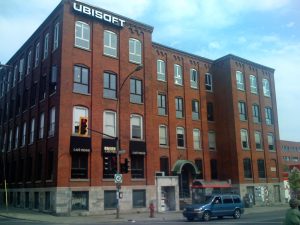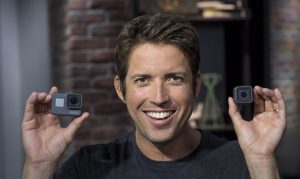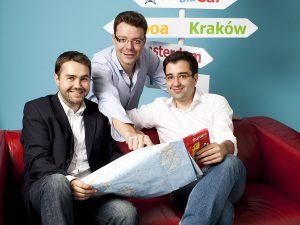Ubisoft : The Journey of the Leading Video Games Company; From a Small Village to a Global Market
Video games have seen a great transformation since its commencement. It all started with old 3D tic-tac-toe and Moon Landing games, and now, we see visually rich mission games and numerous small scale Smartphone games, which are really good at their functionalities.
The rise of video games not only provided people with new means of entertainment but has also given the opportunity to many businesses and developers to head into new horizons. The founders of the company Ubisoft also founded their passion in the same field, and now they are the owner of the third biggest video game development company.
Origin
Five brothers, Christian, Claude, Gérard, Michel and Yves, from the Guillemot family of northwest France founded Ubisoft in 1986. In the beginning, the Guillemot brothers had joined their family business. They started working even before they started going to University and had gained enough experience to start their own business.

Before Ubisoft, the Guillemot brothers had tried their hands in many other businesses. As their family business was based on farming, there was a real less margin in the business. Soon, they realised that the farming industry was not paying much and was going through a decline. So, the first business they did out of farming was selling audio CDs, as these were the latest trend in the market. The business was good, and soon, they were able to deal in personal computers and established a small shop.
The trade was going well, and along with selling computers, they also sold things that were needed in farming. The Guillemot then stocked up video games in the shop and installed 20 machines to play video games at the shop. In 1980, they shifted from buying the video games from France market to the US’s, as it was much cheaper to buy those video games from the US. This led to a huge difference in the profits, and as a result, the five brothers started another new business. In 1984, they founded Guillemot Informatique and began the mail-order business around computers and software.
By the year 1985, they were earning good profits through video games and realised that they can have much more of that if they start developing video games by themselves.
Founding Ubisoft
Guillemot brothers founded Ubisoft in Carentoir, in Brittany, on 12 March 1986. Ubisoft is the acronym for Ubiquitous Software, and formally, it was named as Ubisoft Entertainment S.A. For the development purpose, they gathered a team of developers from their neighbouring places and set up their first office in a chateau in Carentoir.
For two years of the startup, the brothers continued operating their company from the chateau only, but it was way expensive to maintain the office. So many of their developers relocated to Paris. One of their first recruited staff, Michel Ancel, who also returned to his hometown in the same year, came back with another developer Frederic Houde with a prototype of a game with highly-animated features in 1994.
The prototype caught the immediate attention of Guillemot brothers, and in 1994, they started working on the same, making it the prime project of the company. They also set up an office in Montreuil and hired 100 developers to work on the project. Finally, in 1995, Ubisoft launched its first hit video game Rayman, which targeted the new line of fifth-generation consoles, like the Atari Jaguar and PlayStation. The instant success of the game made the company popular worldwide.
The game was a huge hit, and only in one year, Ubisoft went for its IPO, in 1996, and raised over US$80 million in funds. The company also expanded to other worldwide cities, including Annecy, Shanghai, Montreal, and Milan, in a span of four years from its inception.
With the expansion of the internet in 1999, the Guillemot brothers found another opportunity to widen the growth of Ubisoft in the US market, too. They, then founded Gameloft, an online game publisher, in 1999. In the year 2000, Ubisoft acquired an American video game development company Red Storm Entertainment, that too, helped Ubisoft to expand in the American market, bringing titles like Tom Clancy’s Ghost Recon and Tom Clancy’s Rainbow Six series.
The success in the US market led Ubisoft to work with companies like Microsoft, at the time, when no one was ready to develop games for Xbox. With Microsoft, Ubisoft brought games like Halo and Ghost Recon, etc.
As of 2017, the estimated valuation of the company was registered at $6.4 billion. Currently, the company owns several video game studios across the world. The company gets the credits of many popular games to its name, including Assassin’s Creed, Far Cry, Just Dance, Prince of Persia, Rayman, Raving Rabbids, and Tom Clancy’s.
As of March 2018, it is the fourth largest publicly-traded game company in America and Europe after Activision Blizzard, Electronic Arts, and Take-Two Interactive in terms of revenue and market capitalisation.

Yashica is a Software Engineer turned Content Writer, who loves to write on social causes and expertise in writing technical stuff. She loves to watch movies and explore new places. She believes that you need to live once before you die. So experimenting with her life and career choices, she is trying to live her life to the fullest.





